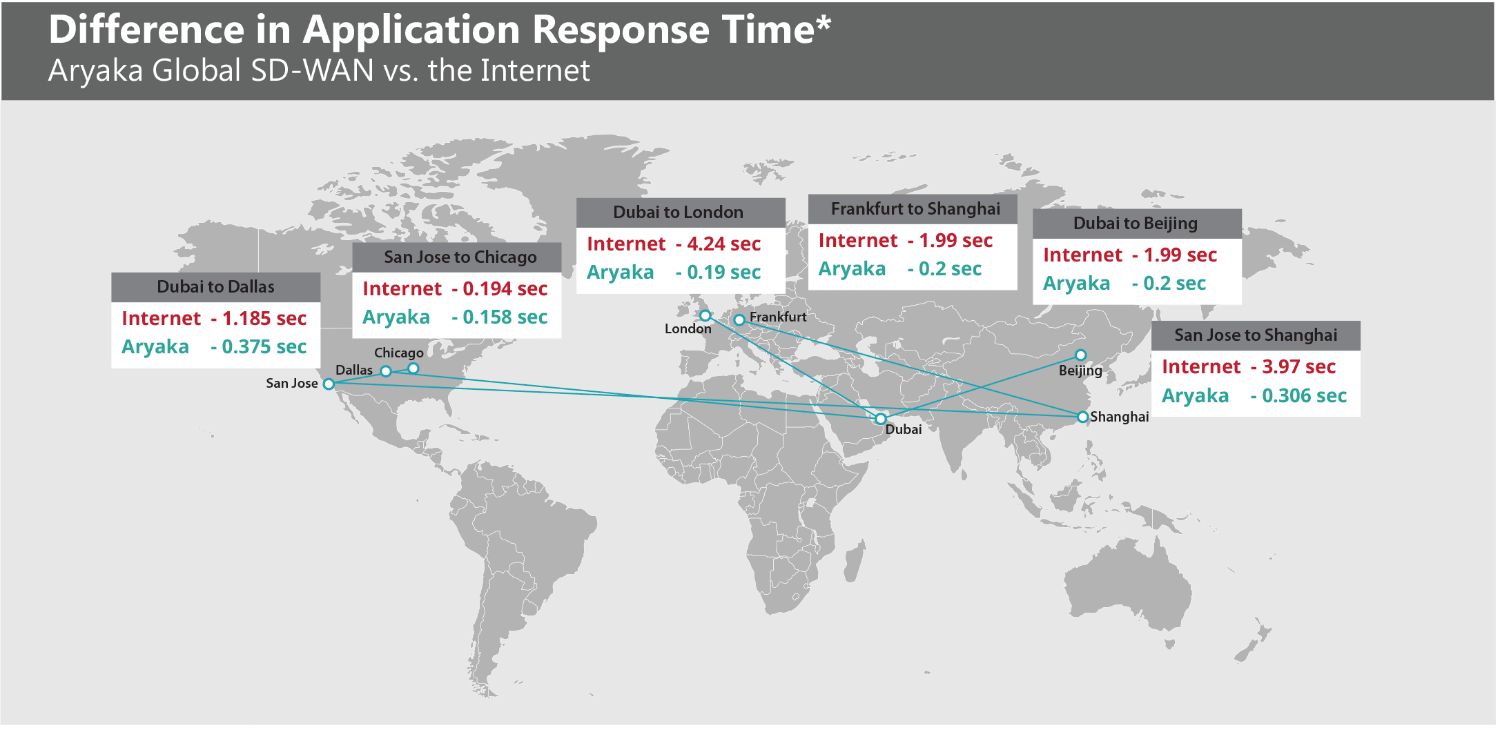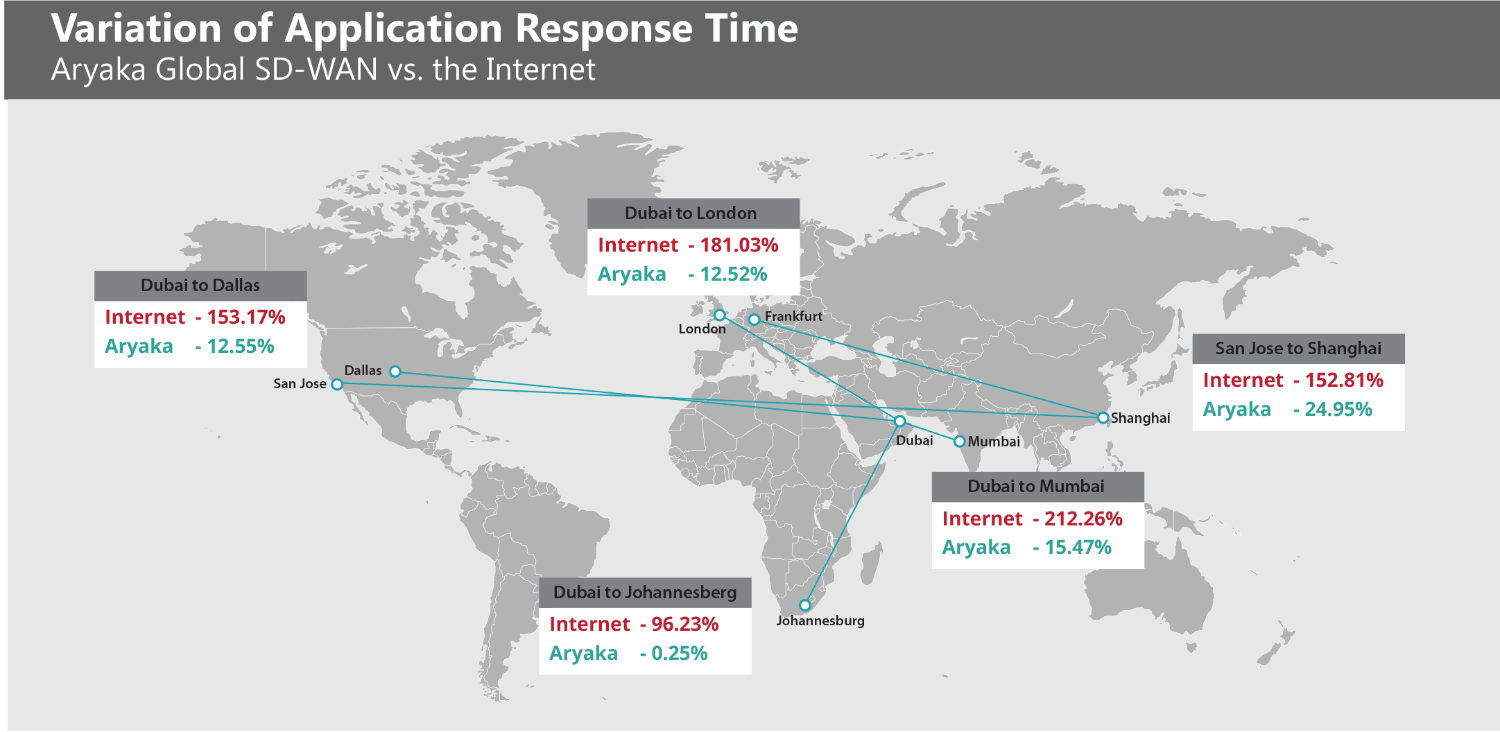Analyzing the Core Performance Difference in SD-WANs
SD-WAN solutions have been making inroads into the enterprise by delivering application performance improvements, reducing network complexity at branch offices, and reducing costs in some cases, but buyer beware: There are two primary underlying connectivity options, and application response times for one are four times better than the other.
That was one of the core findings of Aryaka’s State of SD-WAN Connectivity Report that compared the performance of Internet transport links — which many SD-WANs rely on — to an SD-WAN that uses a private backbone that isn’t susceptible to the vagaries of the public Internet.
It is that basic difference in transport – public vs. private — that separates the SD-WAN players. And while both approaches will save you money compared to legacy MPLS networks, if global mission-critical application performance is a key concern for your next generation WAN, you’ll need to shop carefully.
Taking a measure
To compare the performance of the two approaches, Aryaka set up a global test bed and then sent a randomly generated 100 KB file between locations using the Internet and then using Aryaka’s global cloud-native private SD-WAN. Statistics were collected on HTTP result codes, connect times and transfer times. When the HTTP result code was non-zero, the application response time was calculated as connect time plus transfer time.
Once the data was captured — end points for the test ranged from San Jose and Chicago to London, Frankfurt, Dubai, Johannesburg, Beijing and Shanghai – it was analyzed for two key parameters that influence application performance: average response time, and variation in application response time.
The upshot:
- On average the private network provided 4.1 times better application response time compared to Internet links, and 2.5 times less variation in response time.
- What’s more, there were times when the response rate over longer Internet links — for example, between San Jose and Shanghai — took a full 4 seconds (4,000 milliseconds). That’s simply unacceptable for enterprise applications in this day and age.

Not surprisingly, response times and the variation in response times for the Internet links tended to vary by circuit length and by geographic region. The analysis showed, for example, response time fluctuations between 750 milliseconds and 2 seconds on Internet links between Dallas and Dubai. Three quarters of a second is an uncomfortable application delay in and of itself, but big swings like that will frustrate users.

By comparison, the average response time on Aryaka’s private SD-WAN between Dallas and Dubai was 0.375 seconds, and the average response rate on that link varied by only 12.5%. This lower variation helps deliver a more consistent user experience, especially for voice and video applications.
When it comes to SaaS
The analysis showed that using the Internet as the underlying transport can offer a low-cost, flexible and rapid deployment option for regional deployments, but companies with resources spread around the world need to look at the bigger picture, especially if the SD-WAN will be used to support links to cloud/SaaS applications. Accessing those applications over local, Internet-based SD-WAN links may work fine, but the user experience deteriorates significantly with an increase in distance. Latency, packet loss and jitter are inherent to the Internet and these issues are aggravated with distance.
Historically, Internet-based SD-WANs have been effective at simplifying branch connectivity and driving cost savings from a regional perspective. However, global enterprises that are forced to go over the Internet for most cloud- and SaaS-based applications, experience lost productivity and poor end user experience due to slow application performance. This data highlights the faster and more consistent way to deliver business-critical applications. IT leaders in global enterprise must deploy an SD-WAN solution with a cloud-native private network, such as Aryaka, if they want to ensure real-time delivery of their most essential applications.
And make no mistake, the shift to cloud/SaaS is well underway. In a separate study of traffic on the Aryaka backbone, almost half of the traffic already uses HTTP and HTTPS, the protocols that support cloud/SaaS applications.
The reality is you are going to sacrifice user experience/productivity if you rely on SD-WANs that use Internet links. An SD-WAN based on a fully managed, global private network shrinks the perceived distance between locations to deliver an application performance experience that is nearly identical to those where applications and users are located in the same geographic region.
Before you pull the trigger on that next generation global WAN, make sure you carefully weigh all the facts.







